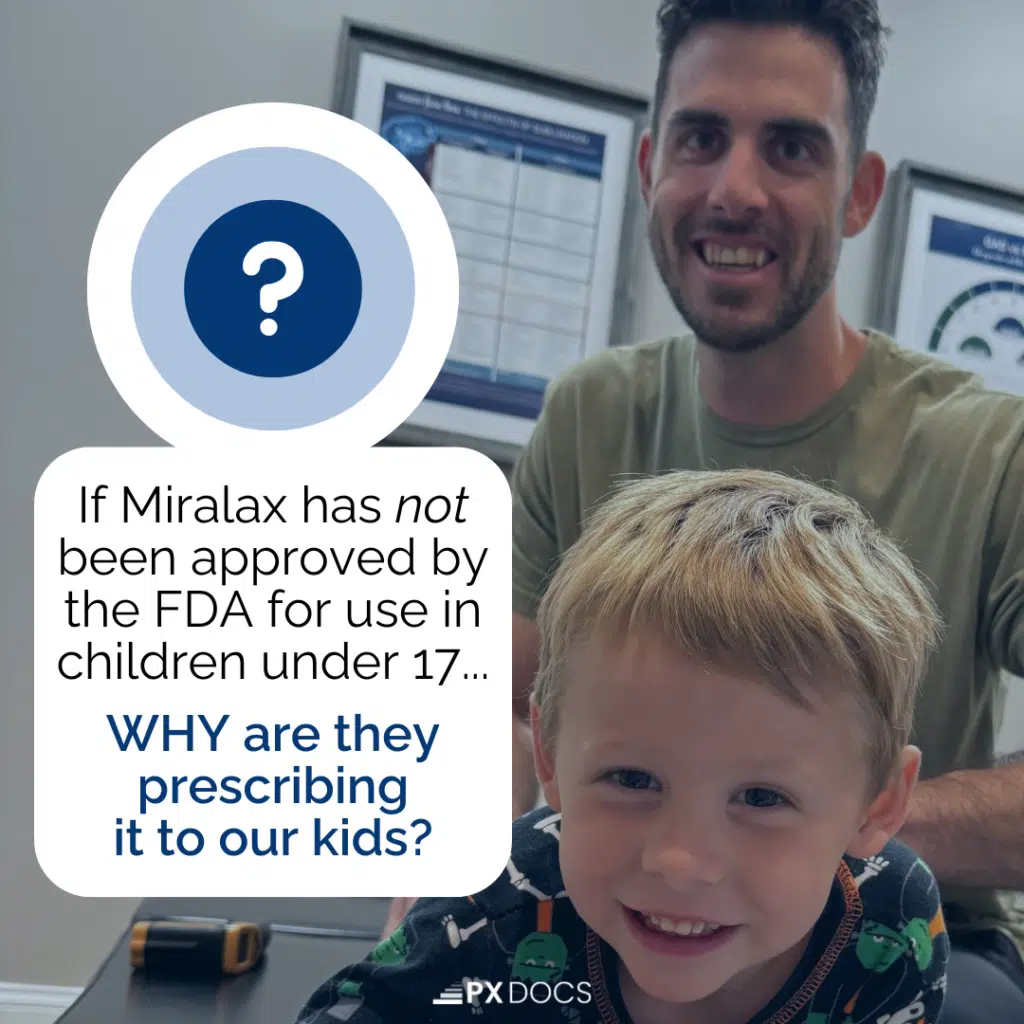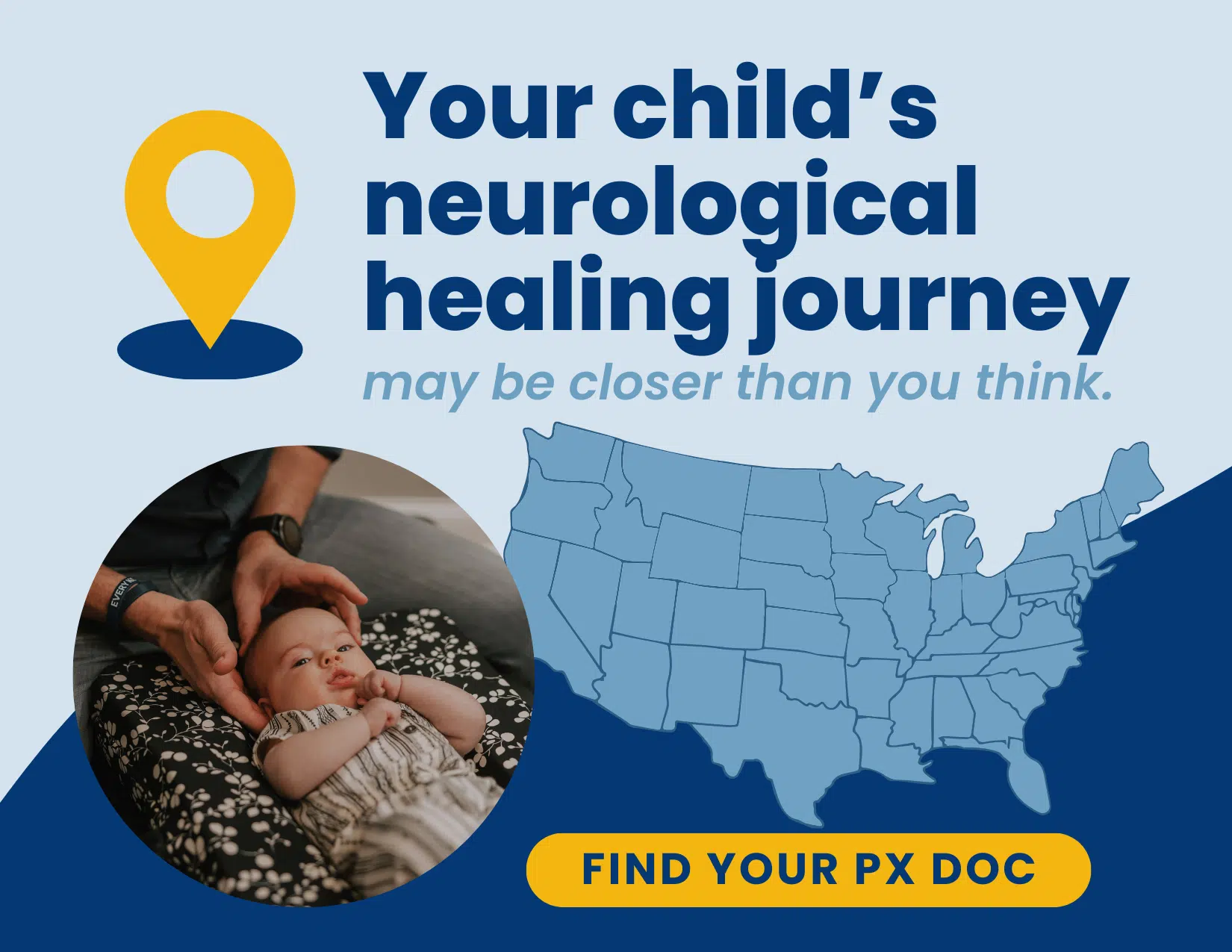As a parent, it’s heartbreaking to watch your child suffer from chronic constipation.
Laura, a concerned mother, shared her story: “I had no idea Miralax could make his behavior even worse. My doctor definitely didn’t tell me that—he mentioned nothing about Miralax side effects.” Her son, Justin, had battled constipation since infancy and was prescribed Miralax, only to experience severe behavioral side effects that left the family feeling helpless and frustrated.
Laura and Justin’s story is not uncommon. According to the American Academy of Family Physicians, constipation affects up to 30% of children worldwide; many pediatricians turn to polyethylene glycol, the primary ingredient in Miralax, as a first-line treatment.
However, the potential side effects of this popular laxative are often overlooked, leaving parents unaware of the risks and searching for answers.
In this article, we’ll dive deep into Miralax’s side effects, exploring the science behind why this medication may not be the best choice for your child’s health. More importantly, we’ll introduce you to a drug-free approach that addresses the root cause of chronic constipation, empowering you to make informed decisions about your child’s well-being.
What is Miralax?
Miralax is an over-the-counter laxative that is commonly used to treat occasional constipation in adults and children. The active ingredient in Miralax is polyethylene glycol 3350, which works by drawing water into the intestines, softening the stool, and making it easier to pass.
Miralax is available in powder form and is typically mixed with water or juice before consumption. The standard dosage for adults is 17 grams (about 1 heaping tablespoon) of powder per day, while a healthcare provider generally determines the dosage for children.
What Does Miralax Do?
Miralax passes the polyethylene glycol through the digestive system without being absorbed into the bloodstream when consumed. It works by osmosis, meaning it pulls water into the bowel from surrounding tissues, increasing the water content of the stool. This increased water content softens the stool and promotes more frequent and easier bowel movements.
It’s important to note that this mechanism of action differs from the body’s natural digestive processes. In a healthy digestive system, the bowel maintains a balance of water absorption and stool consistency through a complex interplay of nerve signals, muscle contractions, and fluid exchange. When Miralax is used, it artificially alters this balance, potentially leading to side effects and dependence on the medication.
Controversy Surrounding Polyethylene Glycol and the Dangers of Miralax for Children
Despite its widespread use, Miralax and its active ingredient, polyethylene glycol, has been the subject of controversy, particularly when it comes to its use in children. In fact, the FDA has not approved Miralax for use in children under 17 years old, and using it in this age group is considered an “off-label” use.
Furthermore, the FDA has received numerous reports of adverse events in children who have used Miralax, including neuropsychiatric side effects such as anxiety, aggression, and paranoia. While a definitive causal link between the polyethylene glycol and these effects has not been established, these reports have increased scrutiny of the medication’s safety profile in children.

As a parent, it’s essential to be aware of these controversies and discuss Miralax’s potential risks and benefits with your child’s healthcare provider before starting treatment. In many cases, addressing the root cause of constipation through lifestyle changes and drug-free interventions may be a safer and more effective approach than relying on medication alone.
Can You Take Miralax Everyday? Common Miralax Side Effects
While Miralax is generally considered safe for short-term use in adults, it can cause a range of side effects, some of which may be particularly concerning for children. Parents must be aware of these potential adverse reactions to make informed decisions about their child’s health and well-being.
The most common side effects of polyethylene glycol include:
- Bloating
- Gas
- Nausea
- Abdominal cramping
- Diarrhea
These side effects are often mild and may resolve on their own as the body adjusts to the medication. However, if they persist or become severe, consulting with a healthcare provider is important.
However, in rare cases, Miralax may cause more serious side effects, such as:
- Severe or bloody diarrhea
- Rectal bleeding
- Allergic reactions (hives, itching, swelling, difficulty breathing)
- Dehydration
- Electrolyte imbalances
If you notice any of these serious side effects in your child, stop using Miralax immediately and seek medical attention.
The Dangers of Miralax on Children’s Behavior and Emotions
One of the most concerning aspects of polyethylene glycol use in children is the potential for behavioral and emotional side effects. Some parents have reported the following changes in their children after using Miralax:
- Anxiety
- Mood swings
- Aggression
- Paranoia
- Obsessive-compulsive behavior
While a definitive causal link between Miralax and these side effects has not been established, the mounting anecdotal evidence has led many parents and healthcare providers to question the safety of this medication for long-term use in children.
Limitations of the Traditional Medical Approach to Chronic Constipation
When children experience side effects from Miralax, the traditional medical approach often focuses on symptom management rather than addressing the root cause of constipation. This may involve adjusting the dosage, switching to another laxative, or prescribing additional medications to counteract the adverse side effects of polyethylene glycol.
However, this approach fails to recognize that chronic constipation is often a symptom of an underlying imbalance in the body, such as a disruption in the gut-brain axis or nervous system dysregulation. By relying solely on medication to treat constipation, we may be masking important warning signs and allowing the underlying dysfunction to persist or worsen over time.
As parents, it’s important to be advocates for our children’s health and to seek out comprehensive, holistic approaches that address the root cause of constipation rather than simply managing symptoms.
Understanding the Root Cause of Chronic Constipation
To effectively address chronic or occasional constipation in children, it’s essential to look beyond the symptoms and understand the underlying factors that contribute to digestive dysfunction. At PX Docs, we refer to these factors as “The Perfect Storm” — a combination of modern-day stressors that can disrupt a child’s developing nervous system and set the stage for chronic health challenges.
Essentially, “The Perfect Storm” includes several key elements that can have a profound impact on a child’s health and well-being:
- Prenatal stress: Maternal stress during pregnancy can affect the developing fetus’s nervous system, potentially leading to a heightened stress response and increased susceptibility to digestive issues later in life.
- Birth interventions: Procedures such as C-sections, forceps deliveries, and vacuum extractions can cause physical trauma to a baby’s delicate spine and nervous system, leading to subluxations and nervous system dysregulation.
- Environmental toxins: Exposure to heavy metals, pesticides, and plastics can interfere with normal nervous system function and contribute to digestive disorders.
- Antibiotic use: Overuse of antibiotics, especially in early life, can disrupt the delicate balance of gut bacteria, leading to digestive issues and a compromised immune system.
When these factors combine, they can create a “Perfect Storm” of neurological dysfunction that manifests as chronic constipation and other health challenges.
“The Perfect Storm” concept also revolves around subluxation, which causes the nervous system to shift into a sustained sympathetic fight or flight response. This disruption can lead to sympathetic dominance, causing the body to prioritize survival functions over digestive activities. In short, subluxation and sympathetic dominance lead to decreased digestive motility, absorption, and elimination, contributing significantly to constipation and other gut issues.
Subluxations can also interfere with the vagus nerve and limit parasympathetic nervous system activity, impacting digestive function. Neurologically-Focused Chiropractic Care aims to address subluxations and restore proper nervous system function to promote healthy digestion.
The Importance of a Holistic Approach
While addressing nervous system dysfunction is crucial for resolving chronic constipation, it’s important to recognize that digestive health is a complex issue that requires a holistic approach. In addition to chiropractic care, factors such as diet, hydration, exercise, and stress management all play a role in promoting healthy bowel function.
By understanding “The Perfect Storm” of factors that contribute to chronic constipation and taking a comprehensive approach to care, parents can help their children find lasting relief and avoid the potential side effects of medications like Miralax. There are so many ways to care for constipation naturally, helping parents to leave Miralax and medications as a true last resort.
The PX Docs Approach to Pediatric Constipation
At PX Docs, we understand the frustration and helplessness that parents feel when their child is struggling with chronic constipation. That’s why we’ve developed a unique approach to pediatric digestive health that focuses on identifying and addressing the underlying neurological dysfunction that contributes to constipation and other digestive disorders.
The cornerstone of our approach is Neurologically-Focused Chiropractic Care—a non-invasive technique that aims to restore proper nervous system function by addressing subluxations and promoting balance between the sympathetic and parasympathetic nervous systems.
By making neurologically specific adjustments that reduce stress and tension on the sympathetic nervous system, as well as stimulate and activate the vagus nerve and parasympathetic functions, we often notice clinically that one of the first vital health functions to improve is digestive motility.
INSiGHT Scans: A Window into Nervous System Function
To accurately identify areas of subluxation and nervous system dysregulation, PX Docs chiropractors use cutting-edge technology called INSiGHT Scans. These non-invasive scans provide a detailed picture of a child’s nervous system function, allowing us to pinpoint the exact areas that need attention and develop a personalized care plan.
INSiGHT scans measure several key indicators of neurological health, including:
- Heart rate variability (HRV): A measure of the balance between the sympathetic and parasympathetic nervous systems
- Thermal imaging: A way to visualize areas of inflammation and dysfunction in the spine and nervous system
- Surface electromyography (sEMG): A measure of neuromuscular tension and motor function
By combining the data from these scans with a thorough health history and physical exam, our chiropractors can develop a targeted care plan that addresses the unique needs of each child.
Case Study: Justin’s Holistic Triumph Over Chronic Constipation
To illustrate the potential benefits of Neurologically-Focused Chiropractic Care for pediatric constipation, let’s revisit the story of Justin, the young boy who struggled with severe constipation and behavioral challenges after taking polyethylene glycol from Miralax.
When Justin first came to our office, he was experiencing daily stomach pain, bloating, and infrequent bowel movements. He was also exhibiting frequent meltdowns, anxiety, and difficulty focusing in school. Justin’s INSiGHT scans revealed significant subluxations as well as signs of sympathetic dominance and reduced parasympathetic tone.
Over the course of several weeks, Justin received gentle chiropractic adjustments aimed at restoring proper nervous system function and promoting relaxation of the digestive tract.
As his care progressed, Justin’s bowel movements became more regular, and his stomach pain and bloating subsided. His behavior and focus also improved dramatically, and he was able to discontinue his ADHD medication under the guidance of his pediatrician.
Justin’s story is just one example of the many children who have found relief from chronic constipation and other health challenges through Neurologically-Focused Chiropractic Care. By addressing the root cause of digestive dysfunction and promoting optimal nervous system function, we can help children achieve lasting health and well-being without relying on potentially harmful medications.
Empowering Parents to Make Informed Decisions
As a parent, you are your child’s greatest advocate and the ultimate decision-maker regarding their health and well-being. At PX Docs, we aim to empower you with the knowledge and resources you need to make informed choices about your child’s care.
Suppose your child is struggling with chronic constipation or has experienced side effects, such as stomach pain, from Miralax or other medications. In that case, we encourage you to explore the drug-free alternatives offered by Neurologically-Focused Chiropractic Care.
By addressing the underlying nervous system dysfunction that contributes to digestive issues, we can help your child find lasting relief and avoid the potential risks associated with long-term medication use.
To learn more about how PX Docs can help your child, we invite you to visit our directory and find a qualified practitioner in your area. Our chiropractors are committed to providing personalized, compassionate care that puts your child’s needs first and supports their body’s natural healing abilities.





